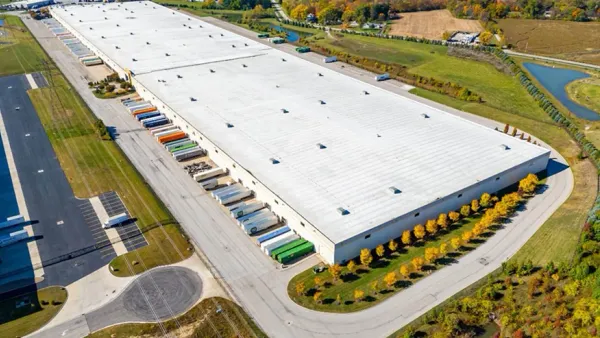Business buying teams have their work cut out for them—whether it’s enabling hybrid work, driving digital transformation or overcoming global inflation. Supply chain disruptions aren’t going anywhere, either.
In today’s fast-evolving landscape, organizations need to keep their eye on two moving targets. First, they must find short-term fixes to meet immediate challenges. Second, organizations of all sizes are looking ahead and developing long-term strategies for smoother, streamlined and more sustainable purchasing. As companies tackle purchasing challenges, a new Amazon Business report shows that more and more prefer online buying. Today, 91% of B2B buyers state a preference for online purchasing.
“Procurement professionals continue to contend with a variety of challenges in a rapidly evolving landscape. We’re constantly looking for opportunities to improve the buying experience for our customers and our 2022 State of Business Procurement Report provides actionable insights to procurement strategies and serves to aid decision-makers as they continue their digital transformation journey,” said Aster Angagaw, vice president of commercial, public and strategic sectors at Amazon Business. “We’re proud to equip buyers across industries, organizational sizes and revenues with the tools needed to meet their business goals and improve operations.”
The question is: What will this new era of business buying look like—and how can businesses adapt to today’s challenges while spurring innovation tomorrow?
3 trends transforming digital B2B buying
Amazon Business’ second annual State of Business Procurement Report provides an in-depth look at the trends shaping purchasing. Findings of the report highlight the challenges facing modern businesses, and how buyers are finding the need to balance focus between cost, operational efficiencies and hybrid work needs, all while contributing to environmental, social, and governance goals.
Here’s a closer look at how the trends identified in the report are impacting the B2B buying landscape:
1. E-procurement evolves from adoption to refinement
While online purchasing was on the rise prior to COVID-19, the pandemic accelerated adoption. Today, only 2% of respondents purchase exclusively offline. By the end of this year, 68% of buyers plan to make at least 40% or more of their purchases online—up from 56% in 2021. With online purchasing now firmly a core procurement tenant, leaders are refining processes, increasing efficiencies and upleveling buying technologies.
This evolution is reflected in buyers’ most important procurement improvements for 2022, which include streamlining purchasing processes for stakeholders beyond procurement and increasing efficiency across the entire organization. Advanced buying technologies—like automated approval workflows, expense management controls and guided buying capabilities—offer organizations more avenues to meet their business goals and improve operations.
2. Distributed procurement becomes standard practice
Much like online buying, hybrid work is now a common business reality. Gallup found that eight in 10 employees with jobs that enable them to work away from the office currently do so. As employees work from their homes, out of coffee shops, or on the go, procurement teams are increasingly responsible for ensuring employees have the equipment they need, when and where they need it.
In fact, more than half (58%) of B2B buyers now make purchases delivered directly to an employee’s personal residence. Additionally, nearly half of B2B buyers (46%) are responsible for making purchases for multiple offices and nearly a quarter (25%) are tasked with supporting offices in multiple countries.
Online channels are vital for organizations to get supplies wherever they need to go. Simplifying distributed procurement can save time and money, while allowing multiple buyers to complete purchases that are both in budget and aligned with their organization’s procurement goals.
3. Social responsibility emerges as a top priority
Cost-cutting measures are no longer the primary focus of most procurement programs. Rather, buyers increasingly base purchasing decisions around social responsibility initiatives, such as supporting diverse-owned suppliers, promoting small businesses and prioritizing sustainable purchasing practices.
The report shows that three of buyers’ top four procurement priorities are focused on corporate social responsibility. In particular, 84% of B2B buyers say their organization plans to increase how much money they spend with Black or other diverse-owned businesses. When it comes to sustainability, 63% of respondents are focused on improving sustainability in their purchasing practices, including buying more from sellers following sustainable practices like net-zero carbon emission production or the use of renewable energy.
Ambitions aside, it’s not always easy to achieve corporate social responsibility goals. More than half (55%) of buyers struggle with the ability to source suppliers with sustainable practices. Perhaps that’s because 89% of buyers said they’d be more likely to purchase sustainability-certified products if it was easier to identify them.
Digital procurement also allows companies to easily search and buy from sustainable sellers, providing visibility into Climate Pledge Friendly products and other sustainability-related certifications. These tools can empower companies to find, compare and purchase supplies that align with their budget and core values.
Over the past two years, businesses have experienced an incredible amount of digital transformation—and it’s not stopping any time soon. The best is yet to come as organizations continue to optimize and refine technologies and digital strategies. Smart business buying is helping organizations meet their goals and live out their values, whether it's enabling greater operational efficiencies, meeting the demands of hybrid work, achieving social responsibility objectives or spurring future innovation.
Although every industry has its unique challenges, e-procurement technologies and tools help all business buyers adapt to current events, adjust to increased responsibilities and overcome common pain points. In other words, online procurement has set the stage for more strategic and agile B2B buying experiences.
About Amazon Business State of Business Procurement Report methodology
Amazon Business surveyed 440 B2B buyers across the U.S. in April 2022 using an online survey platform. Respondents included full- and part-time employees across a range of job levels. Those commercial organizations made at least $250M in annual revenue. Respondents work in the following sectors: commercial industries (240), healthcare (95), education (60) and government/nonprofit (45). All buyer respondents play an influential role in their organization’s procurement process. This report also references data from Amazon Business’ 2021 B2B E-commerce in Evolution Report, which surveyed 250 B2B buyers of similar demographics between December 2020 and January 2021.










